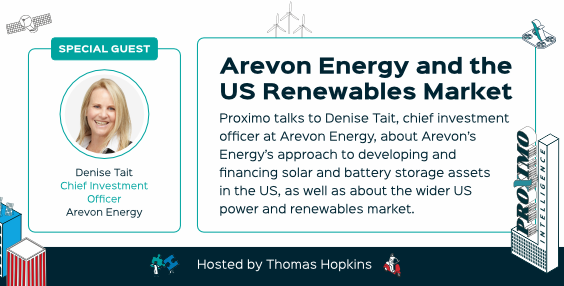The DoE offers a cure for the US transmission permitting mess
US transmission is troubled by a lack of pipeline, not a lack of capital. A new DoE grant programme aims to speed up approvals.

“The financing of transmission projects is never, ever, the exciting and challenging bit. It’s always the permitting”. That was the verdict of one of the sponsors of the Neptune RTS subsea transmission cable, shortly after its $550 million private placement reached financial close in 2005.
Those years were unusually comfortable for developers of contracted transmission assets, even 105km cables running underneath very busy shipping lanes. But that attitude generally reflects the fact that transmission enjoys all the economic benefits - strong offtakers, barriers to entry, essentiality - that sponsors, lenders and ratings agencies love.
This picture has evolved a little since then. Bankers working on Blackstone’s Champlain-Hudson Power Express transmission line can tell hair-raising tales of their efforts to place the swaps on that $6 billion project’s financing package before it reached close at the end of 2022.
But the list of otherwise blameless US transmission projects stuck in permitting hell is generally much, much, longer than the list of closed transactions. This is not a phenomenon unique to the US. The UK has, despite Brexit, been an active market for interconnection development, but saw one project - the £1.2 billion AQUIND cable - refused planning permission in 2022*.
The US rolls out permitting grants
The US is not as crowded as the UK, though there are signs that its opponents of infrastructure development are growing almost as powerful as their counterparts in the UK. Which is why a new initiative from the US Department of Energy looks so promising. On 29 August, the DoE said that it would hand out $300 million to states, tribes local government under the Transmission Siting and Economic Development programme.
The funding is primarily to meet soft project costs - the studies, environmental plans and consultations that need to take place before a project can receive its permits. The funding can even be used where governments have to get involved with the Federal Energy Regulatory Commission process. And it can also be directed towards additional benefits for communities that might be affected by transmission development. There are substantial costs to sponsors from delays in transmission permitting - because a lack of dispatch capacity may sink a generation project's financing, or cripple its economics after close through curtailment.
The largest renewables projects may require their own substantial transmission component. For instance Pattern Energy’s 3,500MW SunZia will require an 885km transmission line to carry its output from New Mexico to Arizona, where demand growth is highest. Even as Pattern readies a construction financing package for SunZia with a rumoured size of $10 billion, it has been using an equity bridge loan to work on the transmission component.
The Proximo Perspective
Proximo’s data suggest that North American transmission is booming, with about $19 billion in financings closing since the start of 2020. That total, however, includes $5.6 billion for Champlain Hudson alone, and another $7.5 billion in issuance for PG&E’s wildfire recovery project. Another $400 million comprises holdco bonds and other refinancings.
And the investment requirement is substantial. The DoE says that the US transmission network needs to expand by 60% by 2030 to meet existing decarbonisation goals, and perhaps triple by 2050. Even in today’s unsettled credit markets, there’s little sign that bank and institutional lenders are unwilling to support the asset class. What there is is a dearth of supply of permitted projects.
The DoE wants to avoid the appearance that it is propping up private developers. They cannot apply for the new round of grants, though they are likely to benefit from better permitting processes. And the DoE also cautions that the programme should not be used to fund community benefits that a developer should have funded anyway. But private developers should be cheering the programme to the rafters anyway.
Three years of North American transmission finance
| Deal | Volume ($m) | Date |
| Carlyle 3 Microgrid | 222.47 | Apr-23 |
| NextEra 345-kV Transmission Line in Niagara & Erie Counties | 140 | Dec-22 |
| NextEra Energy Transmission Bond | 1070 | Dec-22 |
| Ten West Link | 280.38 | Oct-22 |
| Champlain Hudson Power Express | 5650 | Oct-22 |
| WETT Electricity Transmission Bond | 130 | Oct-22 |
| LS Power Grid Holdco | 145 | Aug-22 |
| Pacific Gas and Electric Wildfire Recovery Bond | 3900 | Jul-22 |
| Trans Bay Cable Upsizing | 80 | Jun-22 |
| FirstEnergy Transmission Acquisition | 457 | May-22 |
| Pacific Gas and Electric Wildfire Recovery Bond | 3600 | May-22 |
| WETT Super Holdco Portfolio - Upsizing | 100 | Feb-22 |
| Hydro One Portfolio | 1840 | Jan-22 |
| 33MW RAD Bloom Behind-the-Meter | 133.9 | Aug-21 |
| Morongo Electricity Transmission System - Private Placement | 600 | Jul-21 |
| LSP Grid Electricity Transmission - Private Placement | 100 | Mar-21 |
| DesertLink/Silver Run/ Republic Transmission - Bond | 707.7 | Dec-20 |
| WETT Super Holdco Portfolio | 75 | Jul-20 |
Source: Proximo Intelligence Data
(*AQUIND has contacted Proximo to note that the UK High Court overturned that refusal in January 2023)





